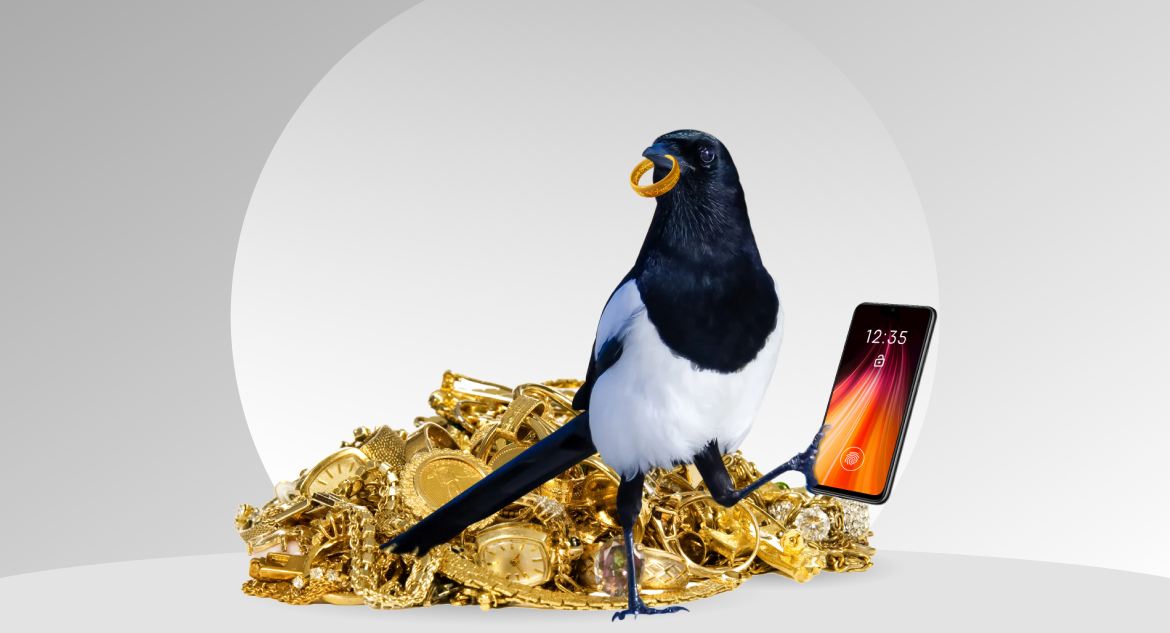Time goes fast, and millennials are becoming the most promising audience for banks and financial institutions. According to Goldman Sachs, millennials will inherit a more significant amount of personal wealth than any previous generation. And one of the reasons for that will be the advanced approach to managing finances, not least due to banking software. The pivotal question of how to build a personal finance app to appeal to the modern generations is promoting traditional banks, fintech, and startups.
Here, in our new article, we will share our insights to help you build the best personal finance management application on the market.
WRITTEN BY:
Alexey Krutikov
PMP, Project Manager,
Qulix Systems
Contents
Step 1 — Study the Personal Finance Tracking Software Market
During COVID-19, digital money management is attaining significant growth, especially in the individual segment: we need innovative solutions for managing credit cards, bank accounts, income, and investments. According to Allied Market Research, the global personal finance software market will reach $1.5 billion by 2027, at a CAGR of 5.7% from 2020 to 2027. So, the demand for specialized tools to integrate all the financial data from various sources will continue its rise.
Two Main Types of Budgeting Apps
First, let us have a look at the personal finance apps available on the market. All apps that help manage money can be divided into two groups according to users' roles in reaching financial goals:
- Simple manual entry solutions. These apps provide tools for manual entry control of spending habits. Expenses can be arranged into categories, analyzed, and used for planning. Users have to enter all their spending data thoroughly. Such total control provides a high level of security, as you do not need to enter sensitive data. Meanwhile, it requires a high personal responsibility to capture financial data and quite a lot of time regularly spent on money management.
- Complex linked solutions. Such apps are, in fact, aggregators of all financial accounts in one place. Users connect their credit cards to a budgeting app. The linked personal finance app automatically adds every transaction and uses advanced analyzing and planning solutions. The main advantage of this personal finance app is the uppermost automated assistance and high efficiency. On the other hand, linked apps require substantial investments into the software development process and secure delivery.
Though manual entry money management apps still have some devoted users, advanced linked solutions are the latest fashion trends for personal finances.
Personal Finance Apps — the Main Players
According to Statista, the projected total transaction value in personal finance will reach $1.7 trillion by 2024, at a CAGR of 25.0% from 2020 to 2024. There is no doubt that the global personal finance management market will have to cope with this shoot forward. But what are the acknowledged leaders of the segment out there now? Below are some famous players we have handpicked for you.
- Mint by Intuit is probably the most popular personal finance app solution for the US and Canada, which is also free. Its users can sync a bank account and a retirement account, add their investment accounts, credit cards, and other financial data. They can also set up notifications for monthly bills and count their credit scores. Mint partners with other companies, so users regularly receive ads and offers. There are no additional ad-free options.
- You Need a Budget (YANB) is a personal finance app that provides its users with roadmaps for smart budgeting and saving. The app collects all the transactions into one ecosystem and carefully arranges them into categories. Everything is monitored and analyzed in real-time. Detailed reports help reach financial goals, build intelligent money-management habits, and save money. The app works with various currencies and is available worldwide for $14.99 per month.
- Spendee is more than just a personal finance app for its users. It is an excellent tool for sharing money management experience with your family or friends. The distinctive feature of this finance app is the option of managing household expenses. Spendee collects bank transactions and allows the users to enter cash expenses manually for the most accurate budgeting. It also notifies about bills and helps avoid late payment penalties. What is more, this budgeting app allows connecting to more than 2,500 banks worldwide for premium plan users. The manual entry version of Spendee is free.
So, you see that all the above personal finance apps have their advantages, distinctive features, and some drawbacks.
Step 2 — Create Your Finance App Ecosystem
Now it is time to specify the budgeting features for the personal finance management app you have in mind — what will persuade your potential customers to delegate the management of their financial habits to your product. Moreover, this list of features will become a starting point in estimating software delivery costs.
Accounts Integrations and Real-Time Updates
Manual control and the possibility to enter every transaction can attract some customers. Still, almost every industry's digital transformation leaves little chance of further development for this type of budgeting apps. It is a nuisance to keep track of all the expenses and, more importantly, to analyze new offers and opportunities without implementing new techs, AI, and other solutions.
The feature of accounts integration in a money management app helps accumulate all information about users' finances. One way to arrange this data stream is Open Financial Exchange facilitated by Microsoft Open Financial Connectivity or Intuit Open Exchange File format. These unified data-stream formats enable financial information exchange across the world.
Spending Categories and Expense Tracking
Seeing the broad picture of your wealth is excellent, but comprehensive money management is impossible without carefully categorizing all the expenses in your personal finance application.
Provide your users with the option of real-time tracking of expenditures on accommodation, entertainment, and other categories. They also want to know about adhering to spending limits and moving towards financial goals. Such adjustable financial tools will help your customers not only save money but develop smart financial habits.
Roadmaps to Finance Goals
Good habits lead to reaching great financial goals, don't they? Definitely, yes, for some. But your personal finance app can also have another great and popular feature that will promote budgeting and saving and help your users estimate their opportunities for the future.
Equip your application with a financial goal-setting feature. For example, your customer wants to buy a car or a house. The finance application can study all the resources available for your client — regular income (salaries and wages, other sources of income) and the best current loan options. Then the software provides the best variant or variants of roadmaps to reach the goals most effectively.
Reminders and Alerts
The next essential feature of successful personal finance apps is carefully arranged communication channels. It is a challenging task for the app development process — to strike a balance to keep the users informed about payment deadlines, important updates, offers and not overload them with inessential ads.
One more important task for smart reminders is to get your users involved and thus make them loyal to taking advantage of your money management app on a regular basis.
Innovative Approaches
Provide your users with more than just a calculator of expenses but a flexible money management app rich in the latest innovations. AI-powered advisors, cloud sync for easy access from various devices, blockchain, and big data will make your product stand out from the crowd among your competitors. Some ideas for additional options are:
- credit score;
- currency converter;
- tax calculator;
- shopping lists;
- chatbots, advisors, and other features.
For example, one more great product of Intuit — Credit Karma — rushed into the market and attracted 69.2% of their first users thanks to two exclusive free offers. The Debt Repayment Calculator allowed comprehensive calculating of the amount of interest left on their debt. The AI-powered Credit Score Simulator provided an outlook of customers' credit scores and how they might change with a hard inquiry. As a result, in 2021, more than 100 million people regularly used Credit Karma's budgeting app.
Step 3 — Secure Your Budgeting App
What is the biggest concern for users of a money management app? Without a doubt, these are security measures for protecting their assets. The idea of sharing sensitive data about your personal finances can be uncomfortable and even scary. From the perspective of the personal-finance companies, even the tiniest security flaw can bring damage to customer loyalty and ruin the business.
So, what are the bread and butter of security measures for a winning personal finance application? The most essential ones are as follows.
Multifactor Authentication
The first defending line of a budgeting app is a multi-layer protection shield to verify the user. This procedure must comply with regulatory requirements like the SCA in the European Union or the FCA in the UK. According to the regulations, to enter the account, users have to pass at least two layers of identification: for example, enter a password, a code sent to their devices, and use a fingerprint, or voice activation.
Encryption and Tokenization
The modern standard for secure sensitive data exchange requires advanced solutions for avoiding clear text data transmission. You can imply a standard SSL protocol or partner with a data security platform, for example, ShieldConex® by Bluefin.
Short-Time Sessions
A money management app with sessions of a limited lifetime will help avoid situations when apps run unprotected and become vulnerable to hacker attacks.
ABCD Protection
AI, blockchain, cloud access, and data analytics provide powerful capabilities for secure app development of the best personal finance solutions. For example, AI-powered technologies by Riskified protect users of your money management app from any possible fraud violation.
Step 4 — Find a Reliable App Development Partner
There can be no thought of delivering a personal finance app without a particular concern about finding the best trustworthy software development partner. iOS and Android app development requires hiring dedicated teams of professionals who are capable of building a high-quality personal finance management app.
Our time recommends Agile methodologies for smooth and systematic custom software development. If you want to assemble a perfect team, consider hiring:
- a product owner (business analyst) for careful research and roadmap creation to mind all the unique characteristics of your personal finance tracking app;
- a Scrum master (project manager) who will assist the team in carrying out the whole project effectively;
- a solution architect, responsible for product tech delivery, further development, and scaling;
- software developers for backend and frontend app development;
- UX/UI designers with a crucial role in creating a perfect balance between smooth functionality, attractive features, and trendy designs;
- QA engineers who should begin their work at the very early stages of the project to guarantee perfect performance and robust security of finance tracker software.
We should note that the challenge of building a successful finance application requires the highest level of security during the entire software development process. So, make sure that your outsourcing partner applies a comprehensive security strategy.
Final Thoughts
We believe that the market of solutions for managing your personal finances will open new horizons for reaching the most promising opportunities and financial goals. Just learn from your competitors, create not just a product but an appealing ecosystem for your clients. And, indeed, concentrate your energy on keeping your users' finances safe and sound.
Why not launch your personal finance app project right now? Contact our specialists to get the best offer on app development.

Contacts
Feel free to get in touch with us! Use this contact form for an ASAP response.
Call us at +44 151 528 8015
E-mail us at request@qulix.com











